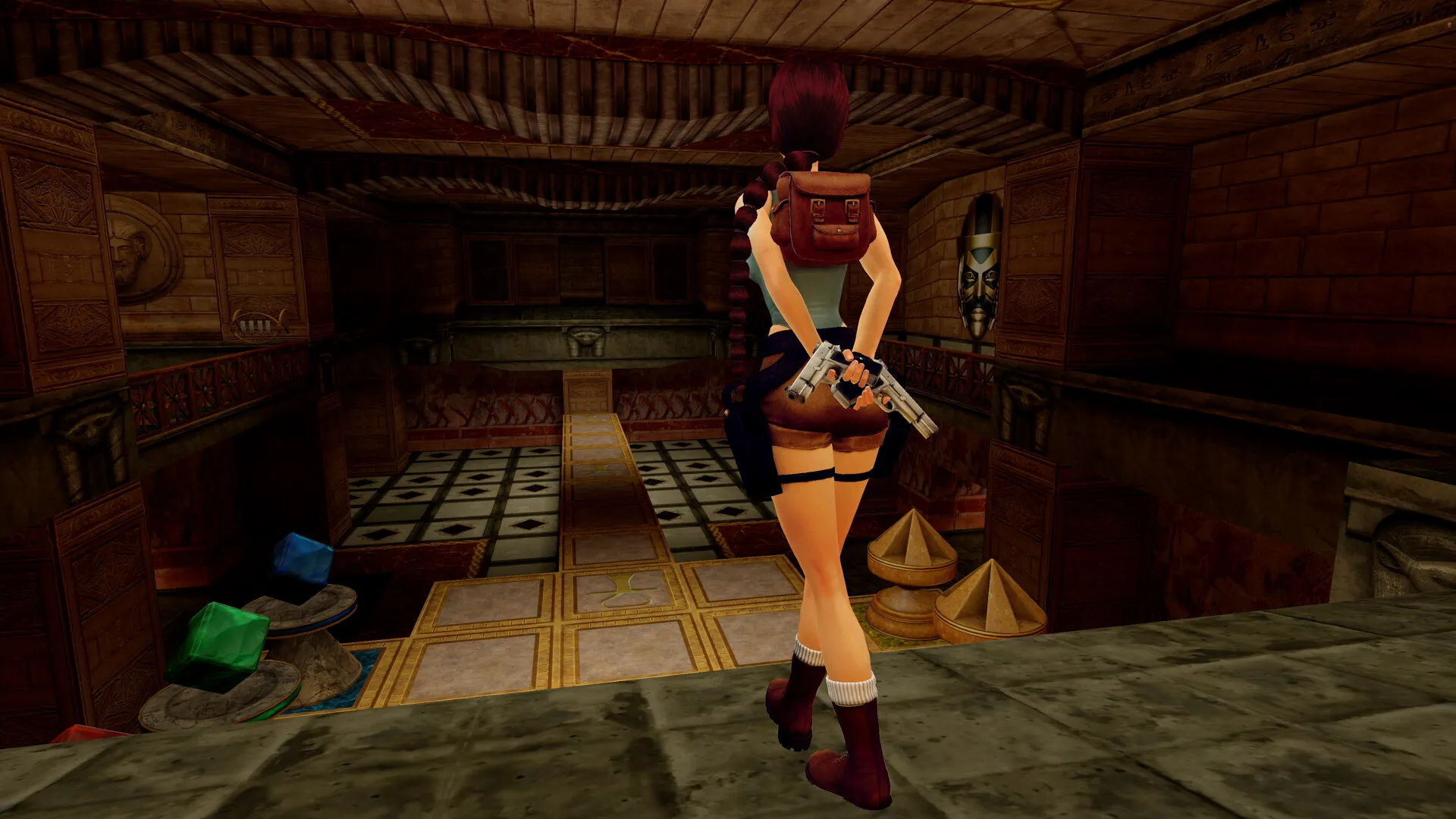The Tomb Raider IV-VI Remastered collection brings together three of Lara Croft’s memorable adventures: The Last Revelation, Chronicles, and The Angel of Darkness. These games explore different stages of the franchise, providing an intriguing look into Lara’s experiences across various time periods and environments.
The collection allows players to experience these classic titles with contemporary improvements, including updated visuals, performance enhancements, and flexible control schemes, while maintaining the original gameplay essence.
Visual updates in The Last Revelation and Chronicles reveal smoother textures and improved lighting. The original graphics retain their atmospheric qualities, with older, darker visual styles creating a distinctive mood. Players can switch between original and remastered graphics, offering a nostalgic experience for series veterans and an engaging introduction for new players. Performance improvements create smoother gameplay on current gaming systems.
The remaster provides both traditional and modern control options, letting players select between the classic method characteristic of earlier Tomb Raider games and a more fluid, contemporary approach. Customizable interface settings and control remapping offer additional player choice, ensuring the collection appeals to various gaming preferences and skill levels.
Tomb Raider: The Last Revelation
The Last Revelation emerges as the most compelling entry in this collection, primarily because of its captivating Egyptian setting. The game anchors its adventure deeply in Egypt, exploring ancient tombs, temples, and hidden ruins crafted with intricate detail.
Players experience a profound sense of isolation through vast, desolate landscapes and grand tombs that evoke a world both ancient and timeless. The environment becomes more than scenery—it transforms into a character itself, creating an immersive experience reminiscent of classic adventure games.
Barren sands, crumbling monuments, and shadowy chambers construct an atmosphere unparalleled by subsequent Tomb Raider games. This approach diverges from earlier titles’ global expeditions, instead focusing intensely on exploration and discovery.
The gameplay excels through thoughtful exploration, puzzle challenges, and action sequences. Puzzles demonstrate sophisticated design, utilizing environmental storytelling and mechanics that challenge players to analyze their surroundings critically.
Each tomb presents unique challenges, from manipulating complex mechanisms to solving intricate environmental riddles. The bonus level, previously exclusive to PC players, adds an unexpected element set in the Times newspaper archives—providing a quirky interlude that maintains the series’ characteristic unpredictability.
Graphical updates in the remastered version reveal subtle improvements in lighting and texture quality. Updated visuals highlight previously obscured details, especially in how light penetrates ancient ruins and illuminates Lara’s path. The frame rate increase and sharper textures create smoother gameplay, while the option to switch between original and remastered graphics allows players to appreciate both visual styles.
Tomb Raider: Chronicles
Tomb Raider: Chronicles explores a different storytelling approach within the series, presenting an episodic narrative through multiple perspectives of Lara’s companions. The game breaks away from traditional linear storytelling, offering players experiences across varied environments linked to different periods of Lara’s career.
Players travel through diverse locations—from Rome’s narrow streets to Russia’s frigid landscapes and New York’s urban spaces. These settings provide visual and gameplay variety, though they expose some narrative challenges.
The dramatic shifts between story segments can feel disjointed, with tones ranging from serious adventure to lighthearted escapades. The New York segment even hints at cinematic influences reminiscent of action films, which sometimes clash with the series’ core adventure themes.
Gameplay and level design present mixed experiences. Levels challenge players with intricate puzzles and hidden elements requiring careful observation. Certain segments, like the submarine level, struggle with unclear environmental guidance, creating moments of player frustration.
Introduced stealth mechanics add complexity but feel underdeveloped and occasionally conflict with the series’ traditional action-oriented gameplay. Switching between different versions of Lara across various settings attempts to create narrative depth but risks fragmenting player engagement. The experimental approach yields interesting moments yet fails to create a completely cohesive experience.
Game Design and Gameplay
The Tomb Raider series centers on exploration and puzzle-solving across these three remastered entries. The Last Revelation emphasizes environmental interaction, with tombs and ruins designed for comprehensive exploration.
Players solve intricate puzzles by manipulating mechanisms and traversing challenging platforms. Puzzle solutions feel deeply connected to the surrounding environment, creating an organic gameplay experience. Chronicles expands puzzle complexity through diverse settings and mechanics. Stealth challenges in urban locations and detailed environmental puzzles push players to think creatively, though occasional unclear clues can frustrate.
The Angel of Darkness introduces experimental puzzle designs that incorporate Lara’s changing capabilities, signaling a departure from traditional gameplay approaches.
Combat mechanics develop with mixed results. Early games used tank-like controls that supported precise platforming movements. The Last Revelation and Chronicles maintained this deliberate control scheme, enabling complex navigation.
Remastered versions offer modern controls for smoother gameplay, though this trades some original precision. The Angel of Darkness struggles most with combat mechanics. Slow, heavy movement and awkward controls make encounters challenging.
Stealth and melee additions further complicate the gameplay, creating frustrating player experiences. Difficulty levels vary significantly between entries. The Last Revelation and Chronicles provide a balanced challenge rewarding careful exploration, while The Angel of Darkness introduces unpredictable difficulty spikes that disrupt player engagement.
Tonal and Story Shifts
The Tomb Raider IV-VI Remastered collection showcases dramatic narrative changes across three games. The Last Revelation presents a classic adventure story where Lara explores Egyptian tombs while fighting a dangerous threat.
Her character embodies classic heroism—fearless and resourceful—navigating a world filled with perilous ancient mysteries. The narrative stays true to traditional adventure storytelling, emphasizing exploration and dramatic encounters.
Chronicles takes a different approach with its fragmented storytelling. Each episode explores different moments from Lara’s past, creating a mosaic of experiences. The game jumps between settings like New York and Russia, presenting varied tones that range from exciting heists to somber reflections. This structure provides glimpses into Lara’s earlier adventures but struggles to create a cohesive narrative thread.
The Angel of Darkness dramatically shifts the storytelling landscape. Set in Paris, the game introduces darker themes of conspiracy and moral complexity. Lara confronts more challenging emotional terrain, moving beyond her previous straightforward heroic persona. The narrative explores betrayal and murder, presenting a grittier world that contrasts sharply with earlier game experiences.
Character development becomes increasingly nuanced across these titles. The Last Revelation shows Lara as a young adventurer with clear motivations. Chronicles depicts a more seasoned explorer, while The Angel of Darkness presents a Lara grappling with deeper personal challenges and ethical dilemmas.
Conclusion and Recommendation
The Tomb Raider IV-VI Remastered collection captures Lara Croft’s transformation through three distinct games. Updated visuals and improved performance revitalize The Last Revelation and Chronicles, making them engaging for current players while preserving their original essence.
The Last Revelation stands out with its atmospheric Egyptian environment and intricate puzzle design. Chronicles presents a more fragmented experience, exploring multiple settings and storytelling approaches.
The Angel of Darkness represents a challenging entry in the series. Its darker narrative and experimental gameplay elements mark a significant departure from previous titles. Technical limitations and control issues hamper the game’s potential, yet it offers an intriguing glimpse into the series’ experimental phase.
Longtime Tomb Raider fans will find joy in revisiting these early chapters of Lara’s adventures. Players new to the series might encounter some dated gameplay mechanics. The collection’s flexibility—allowing players to switch between original and remastered graphics—creates an accessible experience for different player preferences.
The Review
Tomb Raider IV–VI Remastered
Tomb Raider IV-VI Remastered successfully revives three pivotal entries in Lara Croft's legacy, with The Last Revelation standing out as the best of the bunch. The remastered visuals and modernized controls make these games accessible, though The Angel of Darkness struggles with outdated mechanics. Despite this, the collection offers a solid nostalgic experience for long-time fans, while providing newcomers a window into Lara's evolution.
PROS
- Improved visuals and frame rate boost enhance the experience.
- Option to toggle between original and remastered graphics.
- Flexible control options, including modern and classic tank controls.
CONS
- The Angel of Darkness suffers from clunky controls and gameplay issues.
- Chronicles feels uneven, with episodic tone shifts and inconsistent level design.
- Some puzzles can be overly obscure, frustrating progression.




















































